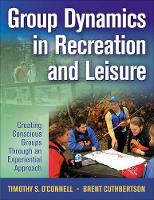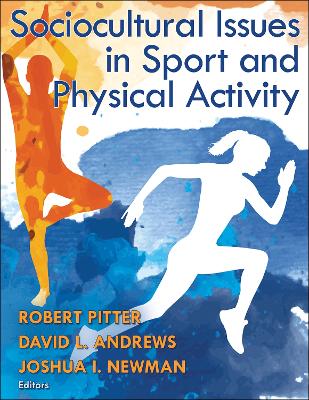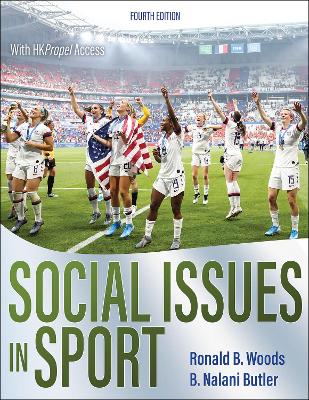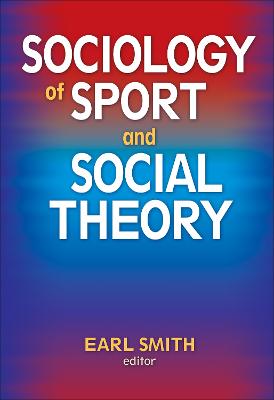Group Dynamics in Recreation and Leisure
 -15%
portes grátis
-15%
portes grátis
Group Dynamics in Recreation and Leisure
Creating Conscious Groups Through an Experiential Approach
Cuthbertson, Brent; O'Connell, Timothy S.
Human Kinetics Publishers
08/2008
208
Mole
Inglês
9780736062879
15 a 20 dias
590
Chapter 1: Introduction to Group Dynamics
-Groups in Human History
-Groups Defined
-Classifications of Groups
-Group Dynamics
-Why Study Groups?
-Summary
-References
Chapter 2: Group Formation and Development Theory
-Why People Join Groups
-What Makes Groups Attractive?
-What Happens Next?
-Group Development Theories
-The Group-Individual Relationship
-Summary
-Questions for Discussion
-Recommended Websites
-References
Chapter 3: The Conscious Group
-Group Purpose
-Personal Growth in Recreation Groups
-Experiential Education
-Experiential Education and Group Dynamics
-Summary
Part II: Developing the Conscious Group
Chapter 4: Group Goals, Objectives, and Expectations
-Defining Terms
-Clarifying Goals, Objectives, and Expectations
-Summary
Chapter 5: Values, Ethics, and Morals
-Definitions
-Moral Development
-Applying Moral Theory
-Moral Reasoning Exercises
-Summary
Chapter 6: Decision Making and Problem Solving
-Advantages of Group Decision Making
-Disadvantages of Group Decision Making
-A Six-Step Process for Making Decisions
-Common Methods of Group Decision Making
-The Leader and Decision Making
-Summary
-References
Chapter 7: Power and Conflict
-Power
-The Operation of Power in Groups
-Managing Conflict
-Summary
Chapter 8: Gender in Group Dynamics
-Gender and Sex
-Gender and Recreation Behavior
-Generalizations About Gender-Specific Behaviors
-Gender and Leadership
-Conformity
-Decision Making
-Communication
-Conflict Management
-Power
-Status
-Task Solutions
-Summary
-References
Chapter 9: Group Leadership
-What Is Leadership?
-Followership
-Leadership Theory
-Applying Leadership Theory
-Summary
-References
Chapter 10: Environmental Impacts on Groups
-Environmental Factors
-Social Environment
-Case Study
-Summary
-References
Part III: Addressing Issues in the Conscious Group
Chapter 11: Strengths, Weaknesses and Myths in Group Dynamics
-Strengths of Groups
-Weaknesses of Groups
-When to Work Alone
-Myths in Group Dynamics
-Practical Techniques for Addressing Group Needs
-Summary
-References
Chapter 12: Crowds and the Mob Mentality
-Collectives
-Behavior in Crowds
-Strategies for Working With Collectives
-Summary
Chapter 13: Alternative Groups
-Consensus-Based Groups
-Participant-Centered Groups
-Working With Alternative Recreation Groups
-Summary
Chapter 14: Diversity and Difference
-Diversity and Difference
-Types of Diversity
-Benefits of Diverse Groups
-Shortcomings of Diverse Groups
-Working With Diverse Groups
-Summary
-References
Chapter 1: Introduction to Group Dynamics
-Groups in Human History
-Groups Defined
-Classifications of Groups
-Group Dynamics
-Why Study Groups?
-Summary
-References
Chapter 2: Group Formation and Development Theory
-Why People Join Groups
-What Makes Groups Attractive?
-What Happens Next?
-Group Development Theories
-The Group-Individual Relationship
-Summary
-Questions for Discussion
-Recommended Websites
-References
Chapter 3: The Conscious Group
-Group Purpose
-Personal Growth in Recreation Groups
-Experiential Education
-Experiential Education and Group Dynamics
-Summary
Part II: Developing the Conscious Group
Chapter 4: Group Goals, Objectives, and Expectations
-Defining Terms
-Clarifying Goals, Objectives, and Expectations
-Summary
Chapter 5: Values, Ethics, and Morals
-Definitions
-Moral Development
-Applying Moral Theory
-Moral Reasoning Exercises
-Summary
Chapter 6: Decision Making and Problem Solving
-Advantages of Group Decision Making
-Disadvantages of Group Decision Making
-A Six-Step Process for Making Decisions
-Common Methods of Group Decision Making
-The Leader and Decision Making
-Summary
-References
Chapter 7: Power and Conflict
-Power
-The Operation of Power in Groups
-Managing Conflict
-Summary
Chapter 8: Gender in Group Dynamics
-Gender and Sex
-Gender and Recreation Behavior
-Generalizations About Gender-Specific Behaviors
-Gender and Leadership
-Conformity
-Decision Making
-Communication
-Conflict Management
-Power
-Status
-Task Solutions
-Summary
-References
Chapter 9: Group Leadership
-What Is Leadership?
-Followership
-Leadership Theory
-Applying Leadership Theory
-Summary
-References
Chapter 10: Environmental Impacts on Groups
-Environmental Factors
-Social Environment
-Case Study
-Summary
-References
Part III: Addressing Issues in the Conscious Group
Chapter 11: Strengths, Weaknesses and Myths in Group Dynamics
-Strengths of Groups
-Weaknesses of Groups
-When to Work Alone
-Myths in Group Dynamics
-Practical Techniques for Addressing Group Needs
-Summary
-References
Chapter 12: Crowds and the Mob Mentality
-Collectives
-Behavior in Crowds
-Strategies for Working With Collectives
-Summary
Chapter 13: Alternative Groups
-Consensus-Based Groups
-Participant-Centered Groups
-Working With Alternative Recreation Groups
-Summary
Chapter 14: Diversity and Difference
-Diversity and Difference
-Types of Diversity
-Benefits of Diverse Groups
-Shortcomings of Diverse Groups
-Working With Diverse Groups
-Summary
-References











